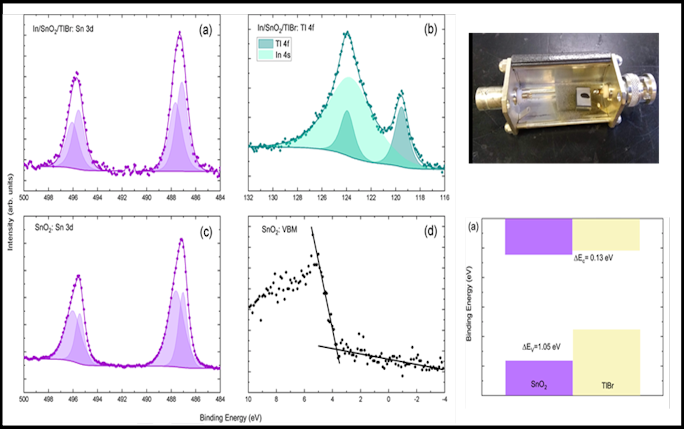New Article Published by Olivia Voyce: Band offsets of metal oxide contacts on TlBr radiation detectors

In November, our paper entitled “Band offsets of metal oxide contacts on TlBr radiation detectors” was published in the Journal of Applied Physics. This work was completed by physics PhD student, Olivia Voyce, and supervised by Prof Laura Harkness-Brennan and Dr Dan Judson from nuclear physics and Prof Tim Veal from condensed matter physics. The results were fundamental to Olivia’s PhD project whereby she studies the use of thallium bromide (TlBr) crystals for gamma-ray detection. Olivia is funded by the EPSRC Centre for Doctoral Training in Next Generation Nuclear.
Thallium bromide is a promising new material for the room temperature, handheld detection of gamma-rays, owing to its large band gap, resistivity and stopping power. However, under a prolonged bias, the crystal can undergo polarization which typically leads to the formation of metal-bromine reaction products at the electrodes and device failure. This works uses X-ray photoelectron spectroscopy to investigate the feasibility of using metal-oxide electrodes which have low reactivity with halides. Using the Kraut method of band alignment, it was found that tin-doped indium oxide and tin oxide form Ohmic contacts on TlBr which suggests that metal-oxides could replace the tradition metal contacts in the fabrication of TlBr radiation devices.
This work is a great example of cross discipline collaboration between condensed matter and nuclear physics at the University of Liverpool as well as collaboration with external partners. The TlBr samples were grown by Dr Amlan Datta at CapeSym, Inc. in Boston, MA, whilst the XPS measurements were taken at HarwellXPS by Dr Mark Isaacs (UCL).